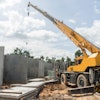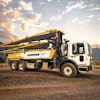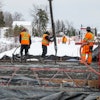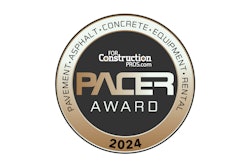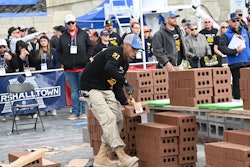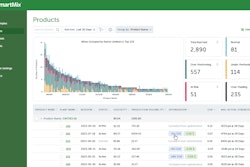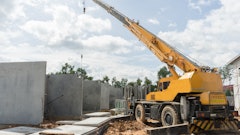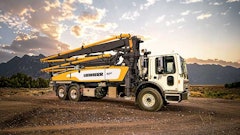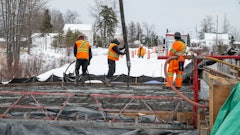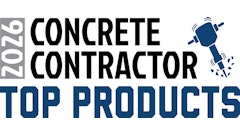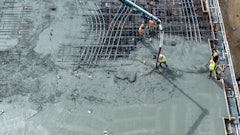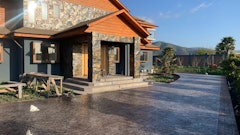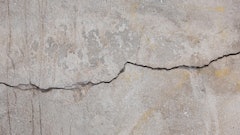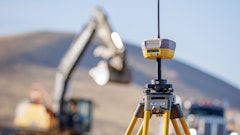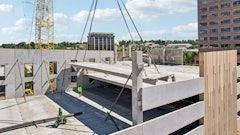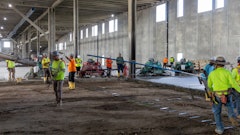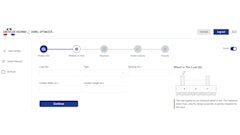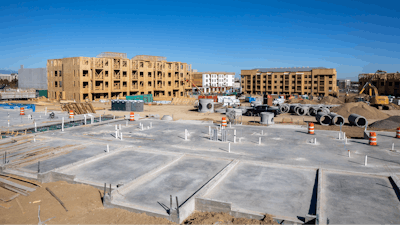
Traditionally, the concrete industry has been slow to adopt technology into its workflow, but today's contractors have solutions that improve and streamline workflows, help to mitigate risks, and promote efficiencies at the jobsite and in the office. As the industry is challenged with a skilled labor shortage, technology has stepped in to help. The labor challenge will likely not disappear overnight—if contractors want to grow, they’ll have to figure out how to do so with technology.
Here are 4 ways concrete contractors are taking advantage of technology.
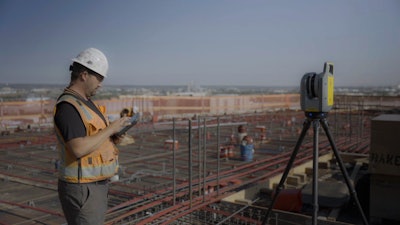 Trimble
Trimble
Robotic Total Stations / Laser Scanning
Laser scanning has been helping contractors be more intelligent with their concrete. For example, being able to do a floor flatness/floor levelness in the field before the concrete is dry with progressive scanning as part of that intelligence. One case study featured the placement of a concrete foundation and discovered that the construction company experienced a 2,000% ROI with 3D scanning progressively throughout the project. This also aided in mitigating mistakes.
Digital Workflow
It could be argued that the major adoption of technology can be attributed toward cloud computing. When everything resided in a desktop, upgrading the hardware in 30 plants or 100 concrete trucks would be a hassle and costly. Cloud-based solutions made it better for integrating platforms and connecting devices.
Today’s smartphone technologies have gotten advanced enough that augmented reality combined with the data from CAD and BIM can provide them a digital way to confirm various elements of the job. Software planning tools can help manage material workflows and assist in more intelligently scheduling activities in coordination with supply chains. A digital workflow also aids in getting bid documents to accounting to the guys in the field and back again.
Telematics dispatch software helps transmit information from the field to the office in real-time. Combined with AI, these solutions can help managers make better business decisions for the projects on the docket.
In a way, the integration of cameras on the jobsite has impacted the jobsite's workflow as well. Modern cameras now allow contractors to better manage access control, monitor pours for oversight and quality control, as well as aid in identifying where processes can be improved. Some use-cases include:
- Using cameras and AI to automatically keep track of vehicles entering and exiting the site in real time, providing data to the project team regarding traffic management on site and even dwell times.
- Live monitoring of pours allows remote teams to provide some oversight for quality control and look for process improvements.
- Future use-cases may include using cameras and AI to benchmark and document progress.
Production Control
Whether at the plant or drum/volumetric truck, technology has given operators a lot more control of the mix. Integrating computerized information and digital operation allows the control to produce the concrete to the mix design and amount needed. AI-based systems at the ready-mix plant help precasters and concrete producers optimize their mix designs - affecting the quality of both the concrete and delivery logistics so trucks show up to the jobsite on-time.
Productivity
Undeniably, electrification has driven a lot of change in the concrete and construction industry, steering contractors from gas-based equipment to battery-powered platforms. In turn, this move has also increased construction projects like infrastructure and the development of solar fields.
Technology has also impacted safety by tracking the metrics of tools and equipment. Manufacturers are noticing the shift that contractors are willing to invest in solutions that improve the ergonomics and health of their workers.
Machine learning isn't being used just for the sake of machine learning, manufacturers are using it to impact the productivity of both the worker with better tools and the jobsite with automation/robotics. The introduction of the laser screed increased the efficiency. Where once a 20,000 sq.ft. parking lot would need 12 workers all day, a laser screed could allow a contractor to need half that plus finishers. The additional workers can then be productive on a separate job.
Technology has a limitless potential for innovation—that’s the point of it. The above represents just a very small swatch of how technology has changed the concrete jobsite (large and small) as well as construction as a whole.
Editor’s Note: Thank you to Danielle Proctor, President and CEO of Advanced Construction Robotics; Patrick Weber, Vice President at Advanced Construction Robotics; Michael Fletcher, Vice President of Sales and Marketing at AICrete; Mark Rinehart, Vice President of Sales and Marketing at Cemen Tech; Aaron Stallbaumer, President of Stallbaumer Contracting and Stallbaumer Concrete Industries; Brianne Stewart, Group Product Manager at Milwaukee Tool; Nathan Patton, Product Marketing Manager in the Field Systems Organization at Trimble; and David Gaw, Chief Strategy Officer & Founder of Sensera Systems in the development of this brief.

